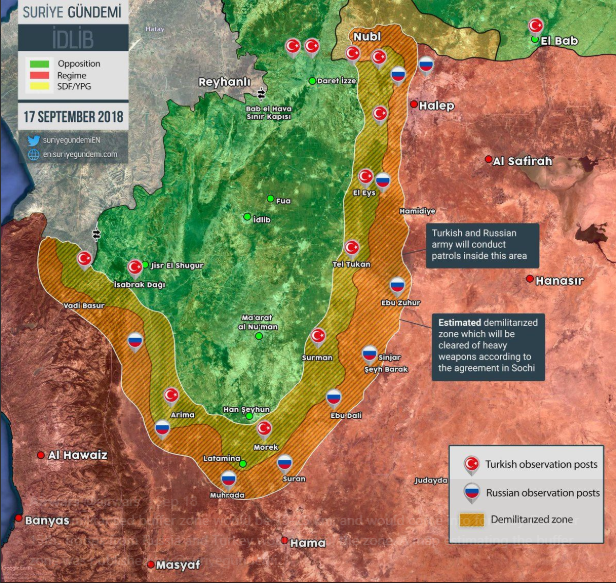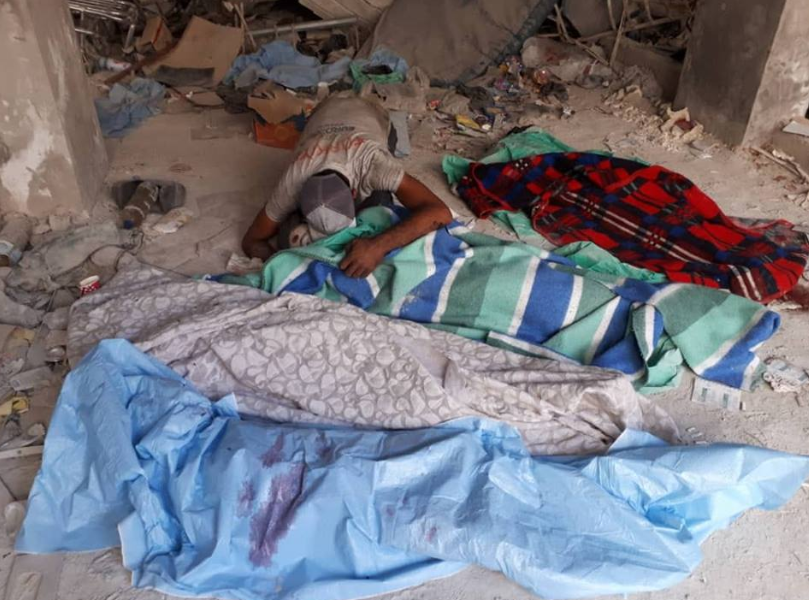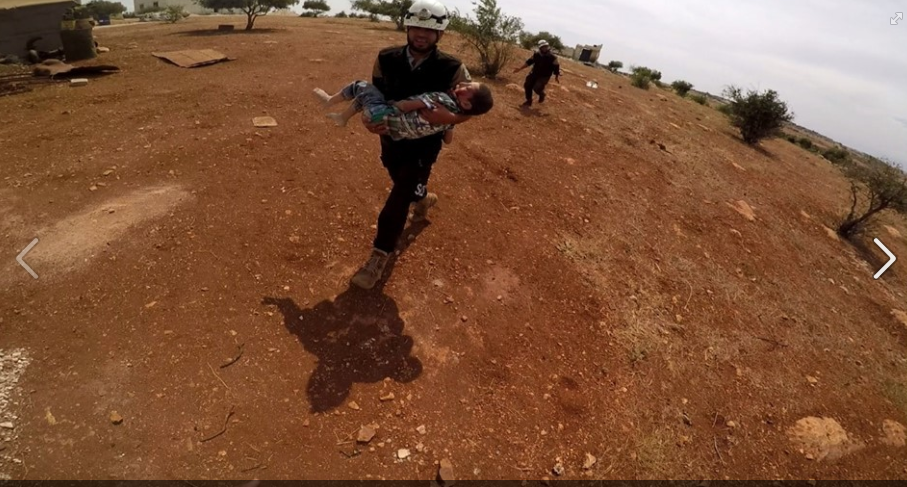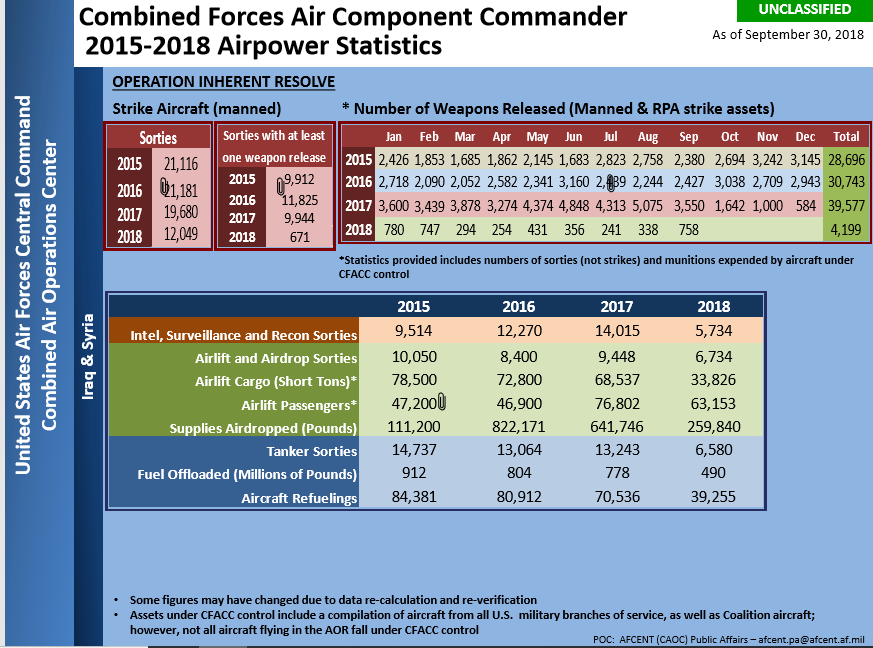Conflict monitoring
In September 2018, civilian harm remained at low levels from both international and domestic belligerents in the three conflict areas which Airwars presently monitors.
Eight civilian harm events were attributed the US-led Coalition in Syria – the same number as in the previous month. While events reportedly involving Russia in Syria rose steeply, the number of civilians claimed killed in these increased only marginally on August.
However, 2018 has still seen Airwars track high civilian casualties at key points. In total, from January to September 2018 inclusive, 721 civilian harm events were alleged against Russia in which between 2,037 to 3,112 Syrian civilians were locally claimed killed. Despite carrying out over 39,000 airstrikes over the past three years – aimed at restoring the Assad government to dominance in Syria – Russia has yet to admit to a single civilian casualty.
For the same nine month period, Airwars tracked 101 claimed Coalition harm events – almost all in Syria – in which between 521 and 766 non combatants were allegedly slain.
Civilian harm from Coalition actions remains a challenge. On September 10th, ground operations began as part of phase three of its Operation Roundup, to clear ISIS remnants from the scraps of territory it still holds in north-east Syria. This next stage of the campaign saw a 229% hike in Coalition air and artillery strikes in Syria – the greatest number of strikes in any given month this year since January 2018.
According to AFCENT, munitions dropped from the air – a far more reliable metric of activity than strikes – more than doubled in September on the previous month. Throughout September for Iraq and Syria, 758 bombs and missiles were fired – a 124% rise on August’s 338 munitions (the August figure was initially reported as 241 munitions – and then revised upwards to 338.)
According to reporting from the ground however, this sharp increase in Coalition activity did not translate into a rise in civilian harm. Indeed, minimum likely deaths fell by 86% on August according to public claims, to a near alltime low. Between 4 and 9 civilians were assessed by Airwars as likely killed by the US-led alliance throughout the month. These surprisingly low numbers came amid reports that the last towns held by ISIS had largely been emptied of civilians.
Similarly, fears of a bloodbath in Idlib governorate (as regime forces moved to oust the remaining rebels) did not come to pass. While Airwars tracked 28 casualty events tied to Russian warplanes in Syria during September – a 600% rise on August’s all-time low of just four events – only between 31 and 45 civilians were claimed killed in these incidents – not far off the minimum of 39 deaths tracked during August.
On September 17th, a deal was struck between Turkey (which supports Syrian rebels opposed to President Bashar al-Assad) and Russia to establish a demilitarised buffer zone in Idlib governorate. That zone is intended to separate government forces from rebel fighters based in Idlib. Troops from Russia and Turkey would patrol the zone
But it remained to be seen whether the deal would hold. It would not be implemented until October 10th – and was dependent upon rebel forces pulling all heavy weaponry, including tanks, rocket launch systems and mortar launchers, from the area by this date, according to Russian president Vladimir Putin.
Crucially however, the demilitarised zone does not encompass Syria’s skies, where fears of international and regional powers clashing remain very real. On September 17th, tensions rose between Russia and Israel when a Russian transport plane holding military personnel was downed by Syrian anti aircraft missiles allegedly fired to intercept Israeli aircraft inside Syrian airspace – and Russia laid the blame firmly with Israel. All 14 Russian military personnel were killed and in retaliation Russia pledged to supply the Syrian regime with advanced S300 anti aircraft systems to help defend its skies.
While for now at least Idlib’s civilians have been spared a predicted onslaught from the skies, the situation remains very precarious – and all eyes remain on the governorate.
Moreover, for those trapped on the ground in Idlib the humanitarian situation is dire. The governorate currently hosts around 3.5 million Syrians – the world’s biggest displaced population – with many in desperate need of food, water and health care, according to UN humanitarian agencies.

A map estimating the buffer zone, which would be 15-25 km, coming into force on Oct 25th. (Published by @suriyegundemi_)
Russia in Syria: civilian deaths remain at low levels
After casualty events reportedly involving Russian aircraft fell to an all-time low during August, the month of September saw a 600% rise in incidents of concern. Throughout the month, Airwars researchers tracked 28 events compared to just four in the previous month.
However, the number of civilians claimed killed in these September events remained at a relatively low level. Based on public reporting, Airwars currently estimates that between 31 and 45 civilians died September compared to a minimum of 39 such deaths in August.
As with August, the majority of September’s incidents (71%) were in Idlib governorate – the last safe haven for over three million civilians, many of whom were previously evacuated from cities such as Aleppo, Eastern Ghouta, Homs and Dara’a.
The remaining casualty events were in Hama governorate – where Airwars researchers tracked seven separate incidents, compared to just one in August.
“Though there was a spike in the number of Russian casualty events in September, most of these were in a span of four days (September 4th, 7th, 8th and 9th), when Russia reportedly carried out raids in various villages in Idlib,” says Abdulwahab Tahhan, who monitors Russian actions and civilian harm in Syria. “However, the majority of these casualty events were contested with the Syrian regime.”
Russian incidents of concern in Syria
After weeks of reporting that civilian harm claims against Russia in Syria had been at record lows, Airwars researchers began to track events in Idlib governorate from September 4th. There were eight separate allegations throughout the governorate on this day alone.
In the first – and worst – of these September 4th incidents, between five and 11 civilians died and up to 20 more were wounded in an alleged Russian or regime air or artillery strike on the Shamali neighbourhood in Jisr al Shoughour, Idlib, according to sources on the ground. The Syrian Network for Human Rights reported that five children from the same family died in a suspected Russian strike – noting that it was the second time that day that Russian warplanes had targeted Jisr al Shoughour.
Five child victims were named as Mohammed Ahmed Hehano, Taha Ezz El Din Hihano, Jalal Ahmed Hihano, Amar Sakhr Hihano and Mohammed Sakhr Hihano. EMC put the death toll as high as 11, and also said that many victims were from the same family. While most sources attributed the event to Russia, Jisr al shoughour Media Centre blamed the regime, reporting both air and artillery strikes.

‘The last goodbye’: a man cradles the body of a loved one following an alleged Russian or regime strike on Jisr al Shouhour, September 4th 2018 (via Jisr al shoughour Media Centre)
On the same day, up to five more civilians died in the Idlib village of Mhambel. Step News Agency and Smart were among sources reporting that alleged Russian strikes had hit a popular market. According to the Syrian Network for Human Rights, “Mrs. Lama al Saeed, from Mhambel village in Idlib governorate western suburbs, was killed along with her daughter Walaa Saeed al Taha“.
On September 8th, Airwars tracked seven separate casualty events in Idlib. In the worst of these, up to six civilians including a girl and a woman died in air or artillery strikes on the village of Abdin, according to sources on the ground. Again, most sources directly blamed Russia, though the Shaam News Network noted that “Russian warplanes and the Syrian Air Force continued to carry out bombardments in a new campaign of escalation [in Idlib]”, with SNN ,”recording dozens of air strikes accompanied by heavy artillery and rocket fire”. Two victims were named as Muhammad al-Muhammad and Mona Swedan, a female child.

A child is carried to safety by a member of the White Helmets following a suspected Russian airstrike on Abdi, Sept 8th (via SN4HR)
From the end of the first week of September, Airwars also began to monitor casualty events in Hama governorate. The worst of these occurred on September 8th when three civilians were claimed killed in an air or artillery strike on Qal’et al Madiq. There were, however, no allegations against Russia: The Syrian Network for Human Rights blamed “regime artillery”, while Shaam News Network didn’t identify the culprit of the “shelling”.
September 9th saw six further events in Hama, killing up to six civilians in total – and two more events in Idlib, in which several non-combatants were claimed killed. However the Airwars research team – tracking local media, journalists and monitors – did not locally record any claimed civilian casualty incidents attributed to Russian actions in Syria after September 10th.

‘Aref Mohammad al Hamada killed as Syrian regime helicopters dropped a barrel bomb on a main street in Kafr Zita city in Hama governorate northern suburbs, on September 9, 2018.’ (via SN4HR)
Coalition actions and reported civilian casualties
The known remaining active international Coalition allies – the US the UK, France and the Netherlands (and Iraq when striking in Syria) – released 758 munitions from the air across both Iraq and Syria during August 2018, according to official AFCENT data. This represented a 124% increase from the 338 munitions reportedly fired in August.
Strikes in Iraq during September remained at similar levels to the previous month: 23 actions were reported – just two less than in August. However, with ground operations for phase three of Operation Roundup beginning on September 10th, there was a 229% increase in air and artillery strikes in Syria, with 214 strikes publicly reported throughout the month – compared to 65 during August. This is the highest number of Syrian strikes in any given month since January 2018.
The Coalition’s second most active ally, the UK, played a key role in this increased activity. The Ministry of Defence reported a leap in airstrikes for September – with approximately 20 strikes in Syria – all near Abu Kamal – up from just one during August. Targets reportedly struck included ISIS-held buildings, command posts and terrorist positions. There were also two British strikes in Iraq, on ISIS tunnels above the Tigris some fifteen miles north-west of Mosul and on the banks of the Tigris, a few miles north of Bayji.
French airstrikes remained at very low levels. There were just two airstrikes reported in Syria (down from three in August), with both near Abu Kamal. However, activity by France’s artillery detachment, Task Force Wagram, in the Euphrates Valley rose steeply. There were 33 shooting missions declared during September – more than double August’s total.
There was also a ramp up in weapon deployment by the Netherlands. Throughout September, weapons were used across nine missions – compared to three in August. Eight of these deployments occurred near Abu Kamal, targeting ISIS fighters, weapon caches and a logistical storage unit. Additionally, in the week ending September 5th, the Dutch Ministry of Defence publicly reported that its jets had attacked an ISIS vehicle near the Middle Euphrates Valley in al Anbar, Iraq.

A GBU-54 bomb is loaded onto an F-16 Fighting Falcon jet, September 26th , 2018. (via U.S. Air National Guard)
Coalition incidents of concern in Syria: publicly reported civilian deaths fall
In September, Airwars tracked eight civilian casualty events in Syria – the same number as in the previous month. Once again, all of these incidents were in Deir Ezzor governorate.
Just three of these events are presently assessed as being fairly reported. An event is assessed by Airwars as fair when it involves two or more uncontested and credible public sources, in addition to confirmation that the Coalition carried out strikes in the vicinity on the day. Airwars’ current estimate is that between four and nine civilians died in these three events, compared to a minimum of 28 non combatants killed during August.
“During September 2018 we monitored one of the lowest levels of civilian casualty claims we have seen during the four year Coalition campaign against ISIS in Syria,” says Kinda Haddad, head of the Airwars Syria team.
“This was surprising mainly as it coincided with Coalition air and artillery strikes against ISIL targets more than tripling compared to the previous month. In the past we have found a close match between the level of strikes and the levels of civilian casualties reported.
The first September incident of concern assessed as likely caused by the US-led Coalition occurred on September 5th, when local media reported that two boys were killed in a an airstrike on the Badiya neighbourhood of Theyban city.
Euphrates Post and Deir Ezzor 24 named the victims as 16-year-old as Abdullah al Klaib and 17-year-old as Jassem Al Mohammad al-Khudair (both from Al Hawaij). The boys were reportedly on a motorcycle “on their way to work at the crude oil burners” when they were killed.

Abdullah Al Klaib, 16, and Jassim al-Mohammad al-Khudair, 17, allegedly killed in a Coalition airstrike (via Syrian Network for Human Rights)
But worse was to come the next week when – in what local media described as “a massacre” – up to six civilians reportedly died along with six members of ISIS in alleged Coalition air and artillery strikes on the town of Al Baghouz, Deir Ezzor on September 13th. A hospital was also reported damaged or destroyed in the event. Jisr TV pointed specifically at “intensive artillery fire” from France and the US, while Smart reported that Al Baghouz was hit by “dozens orf raids and artillery shells and missiles, resulting in large-scale destruction”.
There were no further events assessed as ‘fair’ by Airwars until September 30th when one civilian reportedly died after being hit by “SDF artillery” in al Soussa. It is Airwars’ understanding that only the Coalition has access to artillery in Syria. The victim was named by Boukamlna as Nuri Rifai Al Ali Al Dagher, who was said to have died in Damascus “after being hit by a shell while he was working in his land in the village”. The source, Boukamal Mubashar, added that there was “artillery shelling by the SDF of ISIS positions in al Soussa” on the same day.
Libya
As in August, Libya continued to witness heavy militia clashes in Tripoli. Once again, armed groups affiliated with the Government of National Accord and its rivals the 7th Brigade were at the centre of events.
The militias had agreed to a UN-brokered ceasefire on September 4th which only lasted for a week until gunfights and artillery shelling resumed on September 11th, leading to several events with reported civilian casualties.
Three civilians were allegedly killed on September 20th when they were struck by indiscriminate shelling at a traffic light in Tajoura outside Tripoli. On the same day, a marble factory or metal workshop in the south of the capital was hit by a shell, which reportedly resulted in one dead and two or three injured civilians.
The highest loss of civilian life happened two days before the ceasefire, on September 2nd when a refugee camp in the Al Falah area was hit. Between two and four civilians were reported killed and up to 15 more injured because of artillery shelling.
Towards the end of the month, the situation in Tripoli calmed down again with only occasional reports of clashes. Nevertheless, grievances between the militias remain unresolved, making the capital a highly unstable place.
Other parts of Libya also witnessed airstrikes throughout September. Interestingly, Chad allegedly conducted a helicopter strike in the extreme south at the border between the two countries on September 14th. While targeting rebels in an illegal gold mine, two civilians were reported killed. Sources however were conflicted as to which side of the border the event had taken place.
On September 26th, an airstrike was conducted in Ubari, with local sources accusing the US or France. AFRICOM denied any involvement in a response to Airwars.
The LNA also remained militarily active in September, shelling remnants of jihadi forces in Derna.
Military advocacy
In September, the Coalition assessed 60 additional allegations of civilian harm, 45 of which were Airwars referrals. That report detailed eight incidents newly assessed by the Coalition to be Credible, which it said had resulted in at least 53 more civilian deaths.
Airwars was the source of reporting for five of those Credible incidents. This included a mass casualty event on May 16, 2017 in the Zanjili neighborhood (الزنجيلي) of West Mosul. Local sources monitored by Airwars reported that 20 civilian had been killed, including seven members of the Ramzi family who had taken shelter inside their rented apartment at the time of the strike and which had possibly targeted a nearby car bomb. The Coalition recognised all 20 deaths and the presence of a “VBIED facility” (Vehicle Borne Improvised Explosive Device), though gave no broader explanation for the heavy civilian death toll.
The number of civilians deaths conceded by the Coalition to September 27th 2018 stood at 1,114. That official tally is six times less than Airwars’ most conservative estimate of 6,733 civilian deaths to the end of that month.
There also remains a notable absence of any further admissions by the Coalition of civilian harm during the Battle of Raqqa, which was in its final, most lethal, stages a year ago.
To the best of our knowledge, the Coalition has conceded just over 100 civilian fatalities for Raqqa – despite the intensive aerial campaign it waged during the four month fight to retake the ancient city from ISIS. Between June and October 2017 the Coalition reported firing at least 21,000 munitions into the city. Airwars itself presently estimates than between 1,500 and 2,000 civilians likely perished due to Coalition actions Meanwhile, 70% of Raqqa’s entirety has been destroyed or rendered uninhabitable, according to the United Nations.
Iraq, Syria and Libya analysis: Kinda Haddad, Salim Habib, Abdulwahab Tahhan, Shihab Halep, Sophie Dyer, Koen Kluessien, Oliver Imhof, Osama Mansour, Poppy Bowers, Abbie Cheeseman, Hanna Rullmann, Laura Bruun, Anna Zahn and Chris Woods.


